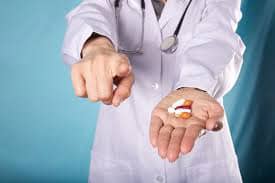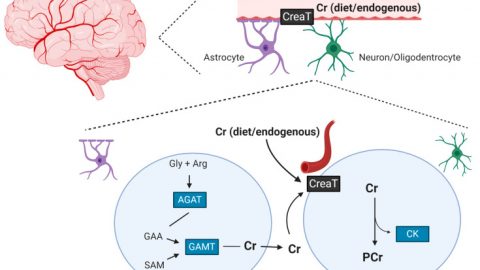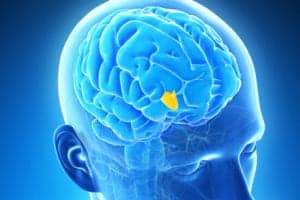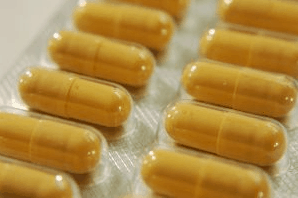The term bioidentical hormone does not have a standardized definition and thus often confuses patients and practitioners.[1] The Endocrine Society has defined bioidentical hormones as “compounds that have exactly the same chemical and molecular structure as hormones that are produced in the human body.”[2] That is, bioidentical hormones are identical to endogenous (produced within the body) hormones.
Note that this generalized definition does not address the manufacturing, source, or delivery methods of the products and thus can include non-FDA-approved custom-compounded products as well as FDA-approved formulations.[2]
For a better understanding of bioidentical hormones, visualize the hormones as a key and the estrogen and progesterone receptors as a lock. Bioidentical estrogen and progesterone will fit perfectly in the lock. Non-bioidentical estrogen and progestin (which is the name for non-bioidentical progesterone) will not. Furthermore, non-bioidentical estrogen and progestin may fit “locks” (i.e. receptors) in the body that bioidentical estrogen and progesterone does not. This is why bioidentical and non-bioidentical have different effects in the body.

Which hormones can be bioidentical and non-bioidentical?
It is important to remember that the issue of bioidentical vs. non- bioidentical hormones only applies to estrogens (estradiol, estriol and estrone) and progesterone. Other hormones like testosterone and thyroid hormones (T3 and T4) are bioidentical to the ones produced by the body, even though they are artificially synthesized.
The term “bioidentical” is often misused by providers of testosterone and thyroid hormone products, and marketing claims abound trying to sell you “bioidentical testosterone” and “bioidentical thyroid hormones” at a high premium price. This is merely a marketing gimmick; don’t let it fool you!
Check out Will’s video on the topic of purported “bioidentical testosterone“.
Marketing testosterone as bioidentical is akin to marketing margarine as “cholesterol-free”. Marketing testosterone as bioidentical is akin to marketing margarine as “cholesterol-free”. All plant foods (margarine is produced from vegetable oils) are cholesterol-free. Or more accurately, plant foods do not contain any animal cholesterol. Plants contain their own special forms of cholesterol called “phytosterols”, but the type of cholesterol that is making waves in the media and has been terrorizing the public is cholesterol from animal derived foods.
The three types of estrogens – estradiol, estrone and estriol
In contrast to non-bioidentical estrogen, which is only estradiol, bioidentical estrogen preparations can contain all three estrogens I different amounts and ratios.[3, 4]
Among women at reproductive age, the main estrogen with the highest biological activity is estradiol. Estrone is about 5–10 times less active than estradiol, and only a small amount is produced in the ovaries. It mainly arises from the peripheral conversion of androstenedione. The least active estrogen is estriol. Most estriol is produced by metabolism of estradiol and estrone in the liver, but small amounts may also be produced by the ovaries.[3]
Therefore, when discussing and comparing bioidentical estrogen containing preparations, it is important to know their composition because different estrogens have distinct physiological effects. This is especially the case with estriol, which is relatively controversial (more on this in an upcoming article) and should not be confused with estradiol.[4-7]
Natural vs. Synthetic Hormones
It is important to know that bioidentical only refers to the structure of hormones; bioidentical hormones have exactly the same chemical and molecular structures as hormones that are naturally produced in the human body. Bioidentical hormones are often also called “natural” hormones. However, this is misleading because the term “natural” refers only to the source of hormones, and not their structural similarity to hormones that are produced in the body.[4]
Natural hormones may not be bioidentical. For example, phytoestrogens are plant-derived “natural” estrogens found in soy products like soy milk, tofu, and tempeh. These phytoestrogens are not structurally identical to endogenous human hormones and thus are not bioidentical. Hormones used in bioidentical HRT, which are structurally similar to endogenous human hormones, are generally derived from soy and yams. However, they need to be processed to become bioidentical. Thus, bioidentical hormones are not completely “natural,” and natural or “plant hormones” are not necessarily bioidentical. This may explain why treatment with wild yam cream, while being free of side-effects, has no effect on menopausal symptoms.[8]
Conventional/traditional hormones may be synthetic or half-natural. For example, progestins and ethinyl estradiol are completely synthetic. Others, such as conjugated equine estrogen (CEE), is half-natural in that it is derived from horse urine but, like bioidentical estrogen derived from soy/yams, needs to undergo processing before it can be used.
Because of this, the term natural hormones and natural HRT should not be used. The important point with bioidentical hormones is that they are identical to endogenously produced hormones. The source of hormones is not relevant for practical purposes and clinical efficacy.
Bioidentical Hormones and Compounded Hormone Preparations
Many bioidentical hormone preparations come from compounding pharmacies. While compounded hormone preparations from compounding facilities not regulated by the FDA, compounding pharmacies still have to adhere to state regulations etc. It should be noted that there are bioidentical estrogen and progesterone that are FDA approved. Here is a list of some FDA-approved bioidentical hormones for menopausal symptoms:
http://www.health.harvard.edu/newsletters/Harvard_Womens_Health_Watch/2011/September/fda-approved-bioidentical-hormones-for-menopausal-symptoms
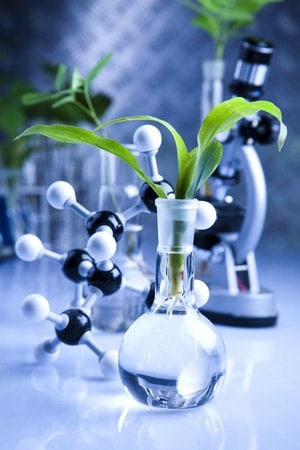
Principles of Bioidentical HRT (BioHRT)
Bioidentical HRT practice has three main core principles:
* Use of hormones identical in structure to endogenous (produced within the body) hormones.
* Optimization of hormone delivery: non-oral delivery methods are especially important for estrogens.
* Use of hormone doses that achieve optimal physiological blood levels of hormones, tailored for every individual woman based on her overall clinical picture.
It is important to underscore that there is no single hormone level that is universally optimal; every hormone therapy needs to be tailored to the individual women in question, taking into consideration all her other labs and overall health status.
References:
1. Whelan, A.M., T.M. Jurgens, and M. Trinacty, Defining bioidentical hormones for menopause-related symptoms. Pharm Pract (Granada), 2011. 9(1): p. 16-22.
2. Files, J.A., M.G. Ko, and S. Pruthi, Bioidentical hormone therapy. Mayo Clinic Proceedings, 2011. 86(7): p. 673-80, quiz 680.
3. Krolik, M. and H. Milnerowicz, The effect of using estrogens in the light of scientific research. Adv Clin Exp Med, 2012. 21(4): p. 535-43.
4. Taylor, M., Unconventional estrogens: estriol, biest, and triest. Clinical Obstetrics and Gynecology, 2001. 44(4): p. 864-79.
5. Head, K.A., Estriol: safety and efficacy. Alternative Medicine Review, 1998. 3(2): p. 101-13.
6. Esposito, G., Estriol: a weak estrogen or a different hormone? Gynecological Endocrinology, 1991. 5(2): p. 131-53.
7. Heimer, G.M., Estriol in the postmenopause. Acta Obstetricia et Gynecologica Scandinavica. Supplement, 1987. 139: p. 1-23.
8. Komesaroff, P.A., et al., Effects of wild yam extract on menopausal symptoms, lipids and sex hormones in healthy menopausal women. Climacteric, 2001. 4(2): p. 144-50.



